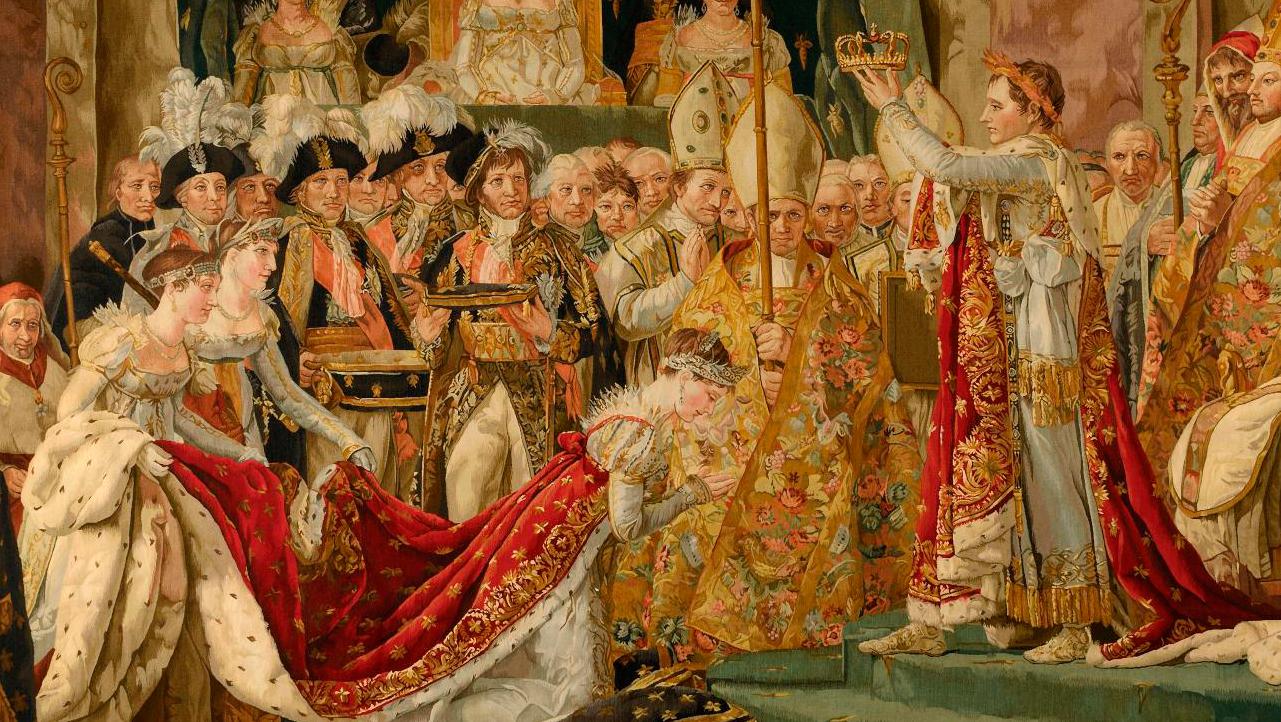The 19th century certainly witnessed a notable dichotomy in the sphere of tapestries. After a period devoid of genius, which confined the woven creations to academic cartoons, the second half of the century saw new interest by artists in an art disregarded for far too long.
19th century, tapestry depicting The Coronation of the Emperor Napoleon I and the Coronation of the Empress Josephine on December 2, 1804 after the painting by Jacques-Louis David (1748-1825), reinterpreted, 245 x 306 cm/96.45 x 120.47 in.
Result: €16,875
While French imperial reforms brought dramatic change in many fields, the former royal factories remained trapped in a disheartening conservatism. Starting with the Directoire (Directory, 1795–1799), the decorative arts certainly responded to the fancies of a new creativity, but woven art was not deemed important. This sad state of affairs dictated the position of tapestry at the dawn of the 19th century, and the situation did not look set to change. In 1805, Napoleon I commissioned the Gobelins and Beauvais factories with tapestries and woven portraits that were required to faithfully copy paintings by Jacques-Louis David, François Gerard and Antoine-Jean Gros. The French imperial palaces were eager for curtained doorways, armchair covers, screens and historiated hangings, but nothing that drew on the intrinsic qualities of loom-crafted works. Worse still, mechanization…
com.dsi.gazette.Article : 33761
This article is for subscribers only
You still have 85% left to read.
